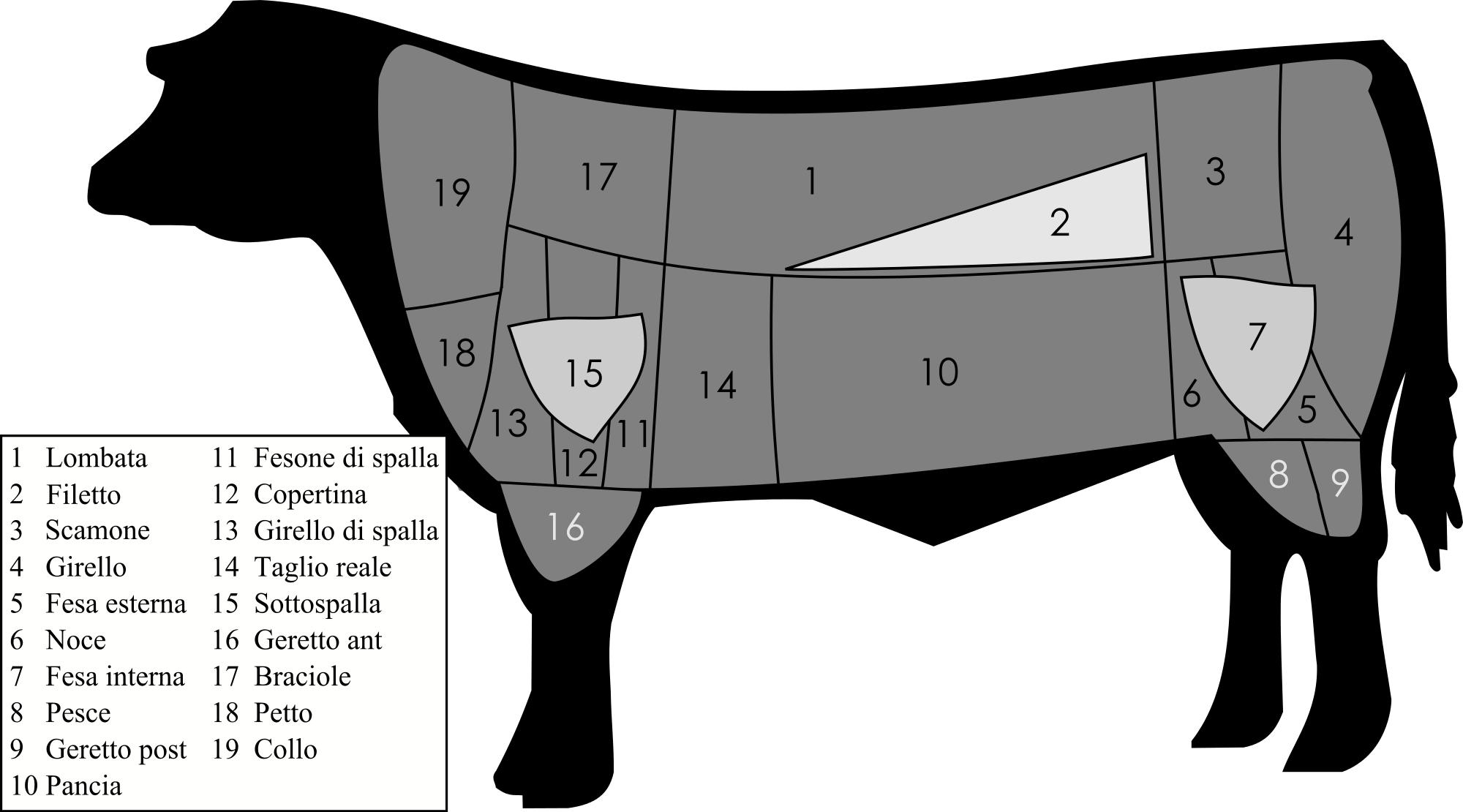Would it help to compare these two graphics from Wikipedia side by side to find the correct butcher term? 

As we can see, the Italian graphic has 19 distinct areas, while the American graphic only has 12 (I don't know how many "special cuts" are omitted though). As others have said, there are cultural differences here, so you might never get a New York strip or short ribs in Italy whatsoever, as they just cut up their cattle differently.
On a personal note, I have noticed that compared to Austria and Germany (I'm from Austria), meat in general in Italy seems to be more tendon-y and less cleaned up when you buy it.
Finally, if you do want a nice T-bone/porterhouse, might I suggest to order some "bisteccha"bistecca fiorentina" (just "Fiorentina" would be enough to be understood). Those are massive steaks that easily weigh in at 800-1500g (1.8 to 3.3 pounds) a piece. A good butcher should be able to get that for you no problem.
